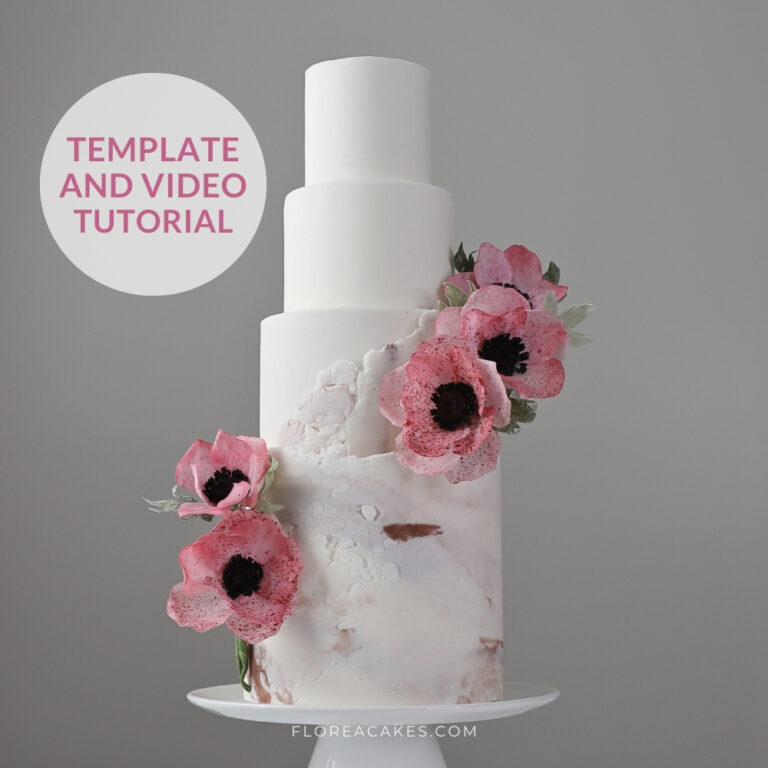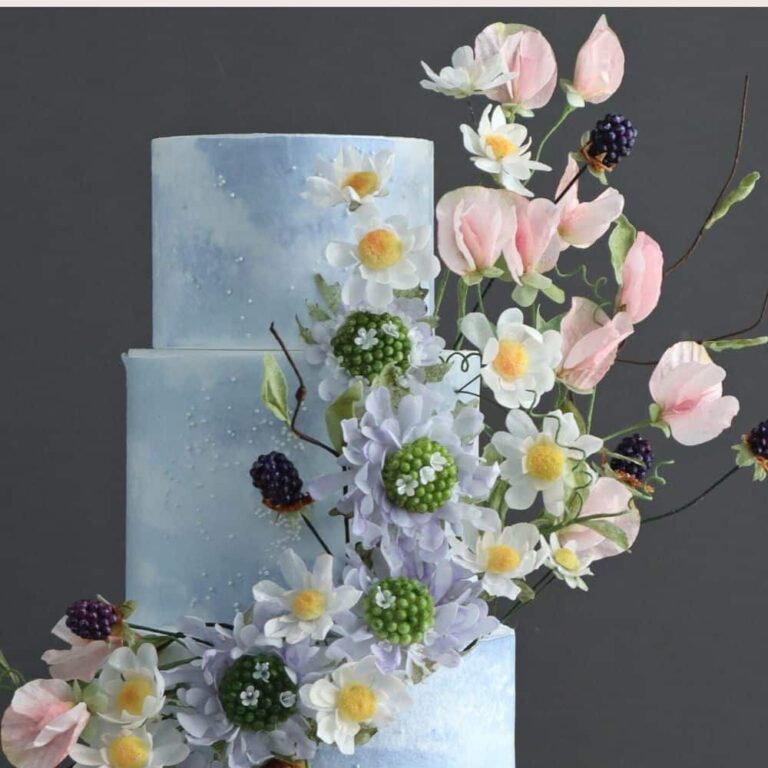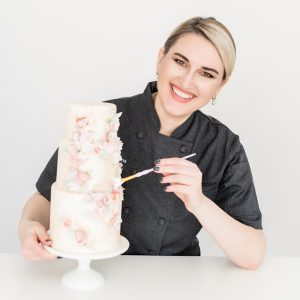Pricing wedding cakes can be challenging, especially when balancing customer expectations with profitability. I remember when I first started—it felt overwhelming trying to factor in ingredients, time, and overhead costs while still making a fair profit.
But here’s what I’ve learned: you’re not just charging for flour, sugar, and butter. You’re pricing your creative work. The years you’ve spent developing your skills, the countless hours of practice, and the unique artistry you bring to every design all contribute to the true value of your cakes.
Whether you’re just starting your cake business or looking to refine your pricing strategy, understanding your costs and setting the right price is key to building a sustainable, profitable business.
Tired of chasing clients who don’t value your craft? The Cake Business Blueprint is here to help you book your dream wedding clients and charge what you deserve! With my easy-to-use portfolio templates, contracts, and a step-by-step roadmap, you can finally take control of your cake business. Plus, the Cake Pricing Masterclass is now included too!
Now, back to the wedding cake pricing methods and my best tips for pricing with confidence and absolute clarity.
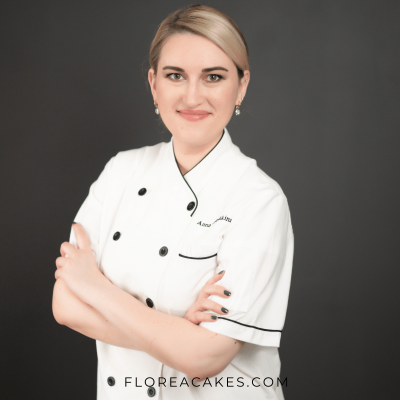
Method 1: Charge What You Want
Let’s start with the simplest and most empowering pricing method—charging what you want. You’re allowed to decide your own prices because no one else can truly determine the value of your creative work. This is especially useful if you’re just starting out and need a clear baseline.
You can start with a simple reverse-engineering formula to help you set prices based on your income goals and availability:
- Decide how many weeks per year you want to work. Example: 20 weeks (a typical wedding season).
- Decide how much income you want to make per year. Example: $50,000.
- Calculate how much you need to earn per week. Following the example above: $50,000 ÷ 20 weeks = $2,500 per week.
- Decide how many cakes you want to make per week. Then, divide your weekly goal by that number:
1 cake/week → charge $2,500 per cake
5 cakes/week → charge $500 per cake
This method gives you a starting point for setting prices that support a profitable and sustainable business—one where you’re paid fairly for your time, creativity, and effort.
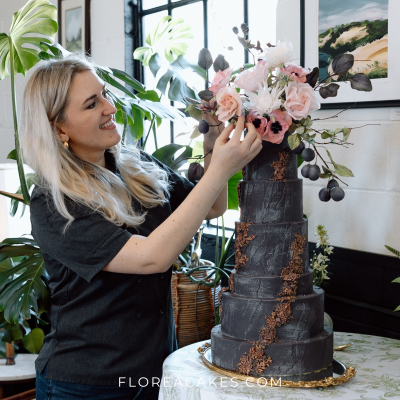
Method 2: Cost-Based Pricing
This is the most common and practical method for pricing wedding cakes. It’s based on calculating the actual costs involved in running your business and creating each cake.
What to include in your pricing:
Ingredients and Supplies
Track the cost of all ingredients used, from flour and sugar to fondant and decorative elements like wafer paper or edible gold. Also, account for supplies such as cake boards, dowels, and packaging.
Overhead Costs
Beyond ingredients, consider your fixed costs. These include rent (if you have a commercial space), utilities, insurance, licenses, and marketing expenses. Even if you work from home, factor in expenses like electricity and water usage for baking.
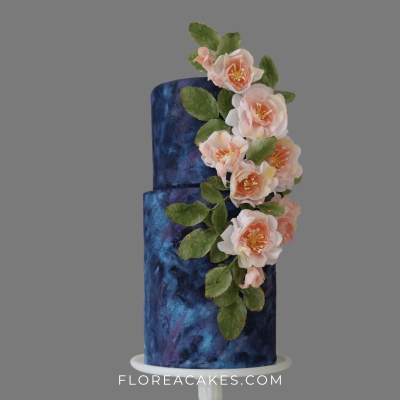
Labor Costs
Decide how much you want to pay yourself per hour, then multiply that rate by the number of hours it takes to complete each cake.
Don’t forget taxes and profit!
On top of your total costs, be sure to add taxes and a profit margin. This ensures your business is not only covering expenses but also growing sustainably.
This method will work in professional settings if you have a bakery and need to make a lot of different desserts. You need to know the exact numbers for how much it costs to bake everything and hire people.
However, for home bakers, I find this method a bit too complicated, and it doesn’t account for creativity.
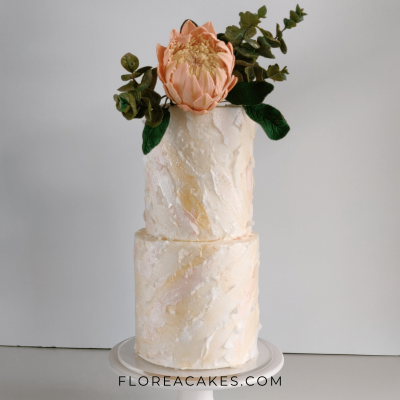
Method 3: Florea Cakes Method (a Hybrid Approach)
Once you’re comfortable with the basics of cost-based pricing and income goal planning, there’s a third method that can give you more control and precision—pricing based on the complexity of design. Simply put: the more creativity you put into designing the cake, the more it should cost.
This is the method I personally use in my business, and it’s a hybrid of the two strategies above. It helps me price fairly while accounting for the artistic value of my work, not just the time or ingredients. Here’s how it works:
Start with a base price of your cake calculated from your direct costs and overhead experiences. This is how much it costs you to make a cake. (Let’s say $36 in ingredients and overhead expenses.)
Group your cake designs into tiers based on how complex the designs are. This is how I have it on my portfolio:
- Classic: Minimalistic, clean designs with a few simple decorations.
- Gold: More intricate details, textured finishes, and custom elements like delicate wafer paper flowers.
- Luxury: Showstoppers with elaborate sugar flower arrangements, intricate textures, or sculpted details.
Choose a coefficient that reflects the time, effort, and creative energy required:
- Classic: ×5
- Gold: ×8
- Luxury: ×10
(These are just examples. I teach you how to choose these numbers for your specific business inside my Cake Pricing Masterclass.)
And multiply your base price by the coefficient!
If it costs you $36 to make a cake, and a client wants a luxury design, the price becomes $36 × 10 = $360 for a highly elaborate, detailed cake in the luxury style.
This approach lets you quickly quote prices without tracking every hour spent or every flower made. It also gives you room to grow by building in your future business costs—like outsourcing, hiring help, or scaling your production.
Bonus tip: Keep a visual portfolio of example cakes in each tier. That way, clients can quickly understand what each level looks like—and you can avoid confusion around what’s included at different price points.
This method works very well because:
- It’s flexible enough for both home bakers and professionals. While some cost-based systems feel overwhelming, this approach lets you keep things simple without undercharging for your creativity.
It also protects you as your skills grow. A cake that takes you 3 hours now might’ve taken 8 when you started—but it’s still just as valuable (if not more). Charging based on the complexity of design rather than hours ensures your prices reflect your expertise, not just your time.
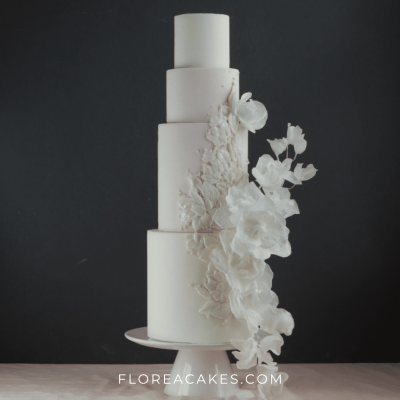
Additional Pricing Tips for Wedding Cakes
1. Don’t Forget Delivery and Setup Fees
Transporting wedding cakes takes care—and often extra time. Charge a delivery fee based on the distance and time it takes you to get there.
Use flat rates for local deliveries within a certain radius.
Charge more for long distances, difficult venues (e.g., outdoor locations, high-rises), or setups requiring extra care.
If the cake needs to be stacked or styled, include a setup fee for your time and expertise.
2. Price Dummy Cakes and Flowers Separately
Dummy cakes are often used to create visual impact without the cost of serving a large number of guests.
The easiest way to price your cake dummies is to know how much it costs you to make that cake in that specific design and subtract the cost of your ingredients. Because you are still making a cake, you are just not baking the insides.
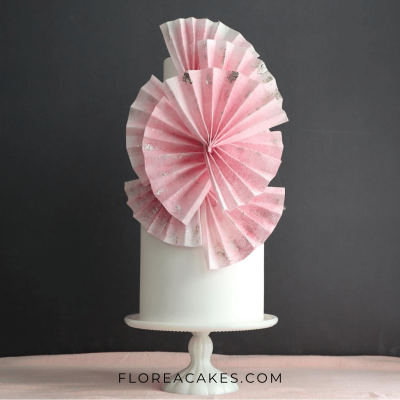
3. Communicate the Value Behind Your Prices
Your clients aren’t just paying for cake—they’re investing in your experience, creativity, and attention to detail.
To help clients understand what they’re paying for:
- Show your process. Share behind-the-scenes content and photos of your work.
- Highlight premium ingredients. If you use organic butter or specialty chocolate, make it known.
- Educate your clients. Talk about the time, skill, and artistry that go into each cake.
If you don’t explain the value, your pricing may be compared to mass-produced grocery store cakes—and that’s not the same product at all.
4. Review and Adjust Regularly
Your prices shouldn’t stay the same forever. Revisit your pricing every 6–12 months to account for:
- Increases in your skill level
- Rising ingredient or supply costs
- New trends or offerings in your business
Your business grows—your pricing should grow with it.

How to Price Wedding Cakes for Profit
Pricing your wedding cakes isn’t just a math problem—it’s a reflection of your value as an artist and a business owner. Whether you use the reverse-engineering method to set income goals or calculate each ingredient and hour through cost-based pricing, the most important thing is to price with intention.
Don’t undersell your talent. Every cake you create is a one-of-a-kind piece that takes time, skill, and creativity. By understanding your numbers, communicating your value, and regularly reviewing your pricing, you’ll not only build a profitable business—you’ll also attract clients who respect your work and are happy to pay for the quality you deliver.
And if you’re looking for the tools to help you set those prices with confidence while booking your dream clients, the Cake Business Blueprint has everything you need. From a customizable cake portfolio template to pre-written email scripts, wedding cake contracts, and a pricing masterclass, this blueprint will guide you every step of the way in creating a business that pays you well.
And remember, you’re not just selling cake. You’re selling confidence, celebration, and a slice of joy on one of the most important days of someone’s life. That’s why we are doing it!
